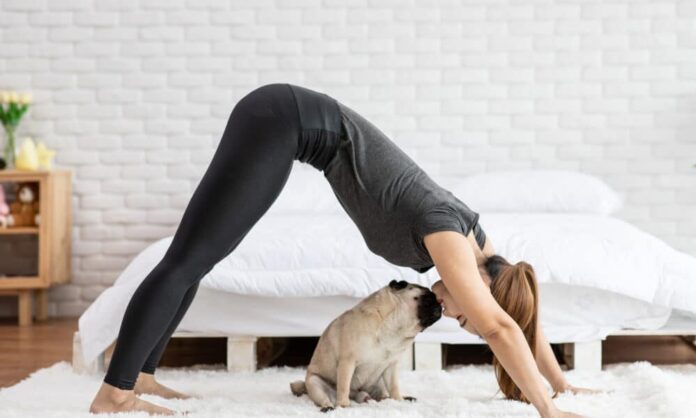Unleashing the Benefits of Dog Yoga: A Comprehensive Guide to Doga
Dog yoga, commonly referred to as Doga, is capturing the hearts of pet owners around the globe. This innovative blend of yoga and canine companionship provides both physical and mental health benefits for both humans and their furry friends. Not only is Doga an enriching experience, but it also strengthens bonds between pets and their owners.
What Is Dog Yoga (Doga)?
Doga encompasses two main types of practices: one in which owners and dogs participate together in yoga classes that include dog-friendly poses (or asanas), and another that involves simply practicing yoga with your dog nearby. During these sessions, your canine companion can either stretch alongside you or socialize with other dogs, basking in the calming ambiance that yoga provides.
Benefits of Dog Yoga
The holistic benefits of yoga for humans are well-documented. However, many people are unaware that Doga also offers significant advantages for dogs—here are some compelling reasons to consider adding dog yoga to your routine:
1. Enhances Physical Health
Yoga promotes improved physical health by increasing flexibility and muscle strength in humans. The same applies to dogs. Doga can enhance your dog’s muscle mass and joint health while improving overall circulation. It is particularly beneficial for obese dogs or those recovering from orthopedic injuries.
2. Strengthens the Human-Dog Bond
Engaging in Doga is an excellent way to maintain your fitness goals while spending quality time with your dog. This shared activity fosters a deeper connection through relaxation and joint participation. Your furry friend will not only accompany you on this journey but also amplify the pleasure derived from it.
3. Promotes Relaxation and Reduces Stress
Yoga’s inherent focus on mindfulness and relaxation helps both you and your dog alleviate stress. Dogs often mirror their owner’s emotions, and practicing Doga together can help calm both parties, relieving tension and anxiety.
4. Facilitates Socialization
Participating in group Doga classes allows you to meet other dog owners, while providing your pet with ample opportunities for social interaction. Proper socialization is crucial for dogs, aiding in their confidence and teaching them how to effectively interact with their environment.
How to Safely Practice Yoga with Your Dog
Doga is accessible for everyone. If you’re new to this practice, keep the following tips in mind to ensure a safe and enjoyable experience for you and your dog:
- Consult a Veterinarian: Before starting Doga, it’s essential to confirm that your dog is healthy enough for the activity. A vet can advise on any potential limitations or concerns.
- Choose Your Setting: Decide whether you want to join a group class or practice at home. Look for local studios offering Doga and understand their dog-related protocols.
- Prioritize Comfort: Ensure your dog feels comfortable in the environment. Allow them to explore and get to know other participants.
- Practice Gentle Movements: When assisting your dog into poses, proceed carefully and avoid overly complicated stretches to eliminate the risk of injury.
- Bring Treats: Encourage positive behavior during Doga with treats, rewarding your dog for engagement and participation.
- Be Patient: Doga sessions may not unfold as planned. Patience is key; let your dog dictate the pace of the practice.
Five Doga Poses for Beginners
Familiarity with canine stretching can enhance your Doga experience. Here are five beginner-friendly poses to try with your dog:
1. Downward Dog
One of the most recognized yoga poses, the Downward Dog involves stretching on all fours. Position your dog either laying down or standing by a yoga mat, then perform a stretch over them.
2. Chaturanga
This transition pose works well in Doga. Lay your dog on its stomach, and gently stroke its back while in the Chaturanga position, promoting relaxation.
3. Heart-to-Hound Mudra
This pose involves sitting in front of your dog, placing one hand on your heart and the other on theirs. Focus on deep breathing to connect with your pet.
4. Chair Pose
Encourage your dog to sit on its hind legs while you do the Chair Pose. Support their torso for stability as they breathe deeply.
5. Savasana
Commonly practiced at the end of a yoga session, Savasana involves both you and your dog laying side by side, allowing both to relax and bond.
Conclusion
Embarking on the journey of Doga might be challenging at first, but remember it’s not solely about physical health—it’s about bonding with your beloved pet. Always adjust your pace to ensure your dog’s comfort, and enjoy the journey together. With practice, Doga could become not just a healthy exercise, but also a cherished routine that strengthens your bond with your furry friend.












